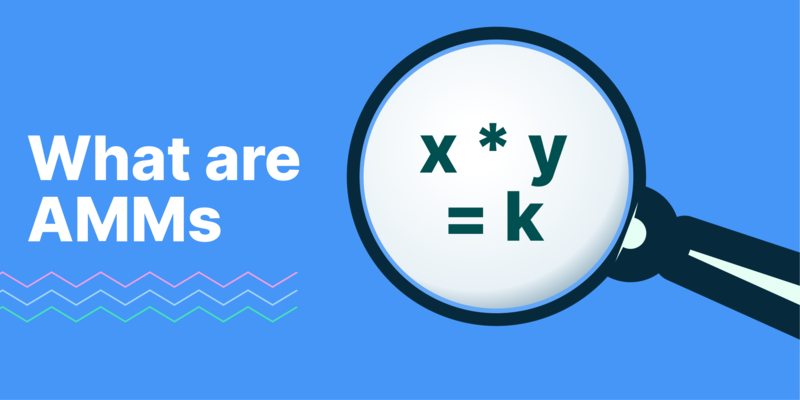Exploring Automated Market Makers: Types, Differences, and Risks

Automated Market Makers (AMMs) have been a hot topic in the cryptocurrency space in recent years. They are an essential tool for decentralized exchanges (DEXs) and have revolutionized the way that liquidity is provided for cryptocurrency trading. In this blog post, we will explore what AMMs are, the types of AMMs, the differences between them, and the risks associated with their use.
First, let's define what an AMM is. An AMM is a software protocol that uses mathematical algorithms to set the price of assets in a market. They allow traders to buy and sell cryptocurrencies without the need for a centralized order book. Instead, the AMM provides liquidity by creating pools of cryptocurrencies, and traders can swap assets by interacting with the pools.
Differences between AMMs
There are different types of AMMs, and the most common are Constant Product Market Makers (CPMMs) and Constant Sum Market Makers (CSMMs). CPMMs, also known as Uniswap-style AMMs, use a formula that maintains a constant product between two assets in a pool. This means that when a trader swaps one asset for another, the product of the two assets' quantities in the pool remains constant. CSMMs, on the other hand, use a formula that maintains a constant sum of the two assets in a pool. This means that the sum of the two assets' quantities in the pool remains constant.
The main difference between CPMMs and CSMMs is that CPMMs have a higher price impact for large trades, whereas CSMMs have a lower price impact. This means that if a trader wants to execute a large trade, the price will move significantly more in a CPMM than in a CSMM. However, CPMMs provide better liquidity for small trades.
Another type of AMM is the Balancer-style AMM, which uses a weighted pool system. Balancer allows multiple assets to be held in a single pool and provides more flexibility in the ratio of the assets held in the pool. This allows for more customization and different pricing strategies.
Risks associated with the use of AMM
While AMMs have made it easier for traders to access liquidity and trade cryptocurrencies, there are also risks associated with their use. One of the main risks is the potential for impermanent loss. Impermanent loss occurs when the price of the assets in the pool changes, and the value of the trader's position is different from what it would have been if the trader had just held the assets. Another risk is the potential for front-running, where traders can manipulate the price of assets in the pool by placing orders ahead of others.
In conclusion, AMMs have played a significant role in the growth of decentralized exchanges and the broader cryptocurrency space. They have enabled users to trade cryptocurrencies without the need for a centralized order book, and have made liquidity more accessible. There are different types of AMMs, each with its own advantages and disadvantages, and traders should carefully consider the risks associated with their use. Overall, AMMs are a powerful tool for cryptocurrency trading, and as the space continues to evolve, we can expect to see more innovations in this area.
Contacts:
email: [email protected]
twitter: https://twitter.com/ambisafeco
instagram: https://www.instagram.com/ambisafeco/
linkedin: https://www.linkedin.com/company/ambisafe/
